NCEA Level 3 Biology - Speciation
1/51
There's no tags or description
Looks like no tags are added yet.
Name | Mastery | Learn | Test | Matching | Spaced |
|---|
No study sessions yet.
52 Terms
Evolution
The permanent genetic change (change in allele frequencies) in a population of species over time
Species
a group of organisms that can interbreed and produce fertile offspring
Gene flow
The movement of alleles (genetic material) between populations due to migration and interbreeding of individuals. It can:
Introduce new alleles, increasing genetic variation within a population.
Alter genetic differences between populations (either increase or decrease).
Introduce beneficial alleles but may also lead to problems like hybridisation.
Genetic drift
The random change in allele frequencies of a population due to chance events.
(occurs in all populations, but it has a much greater effect on gene pool when population is small = alleles being lost from the gene pool)
There are 2 types of it:
- Bottleneck effect
- Founder effect
Bottleneck effect
Catastrophic environmental events or human impact can severely reduce a population size to just a small number of survivors.
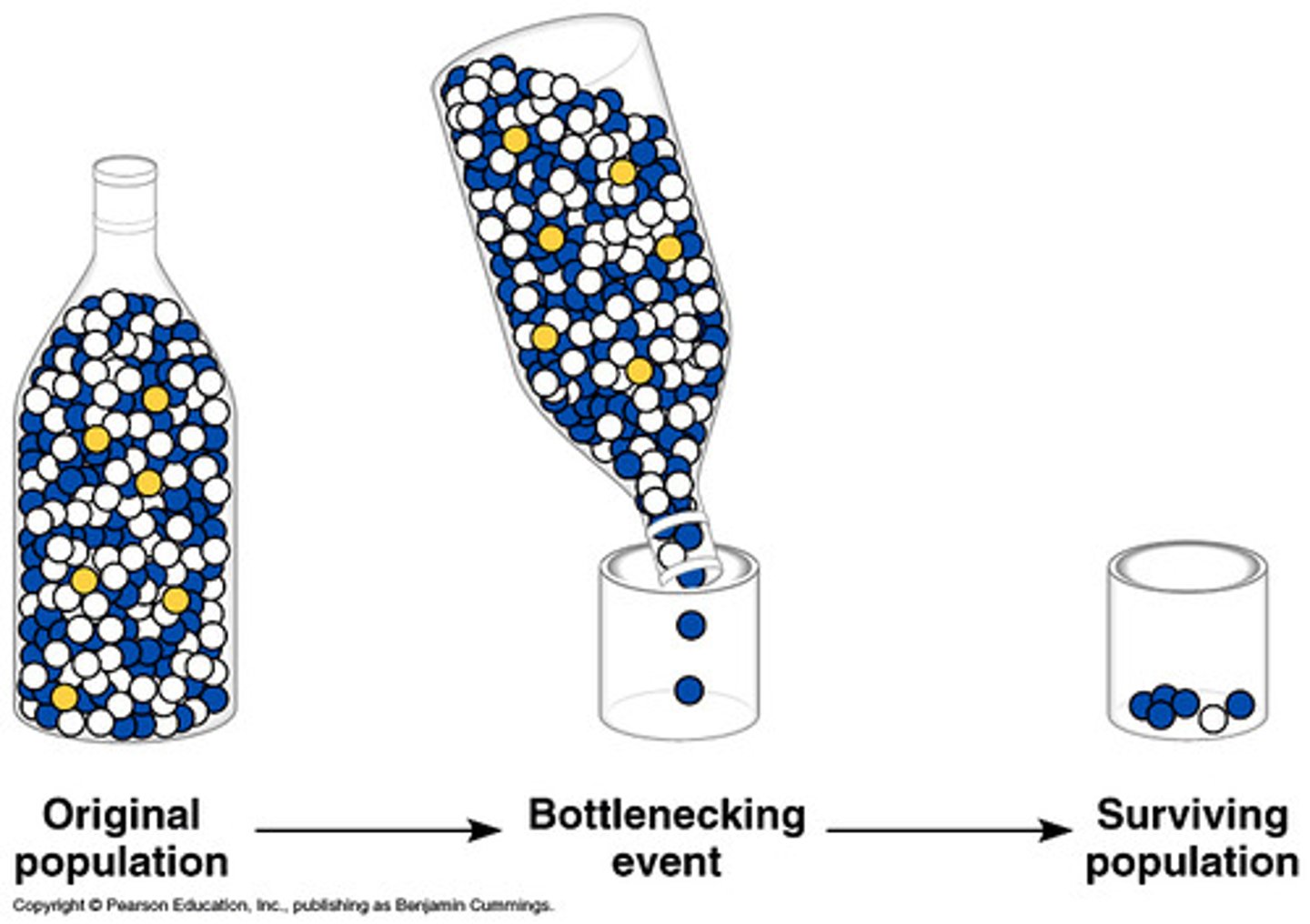
Founder effect
Occurs when only a few individuals from a population move into a new area.
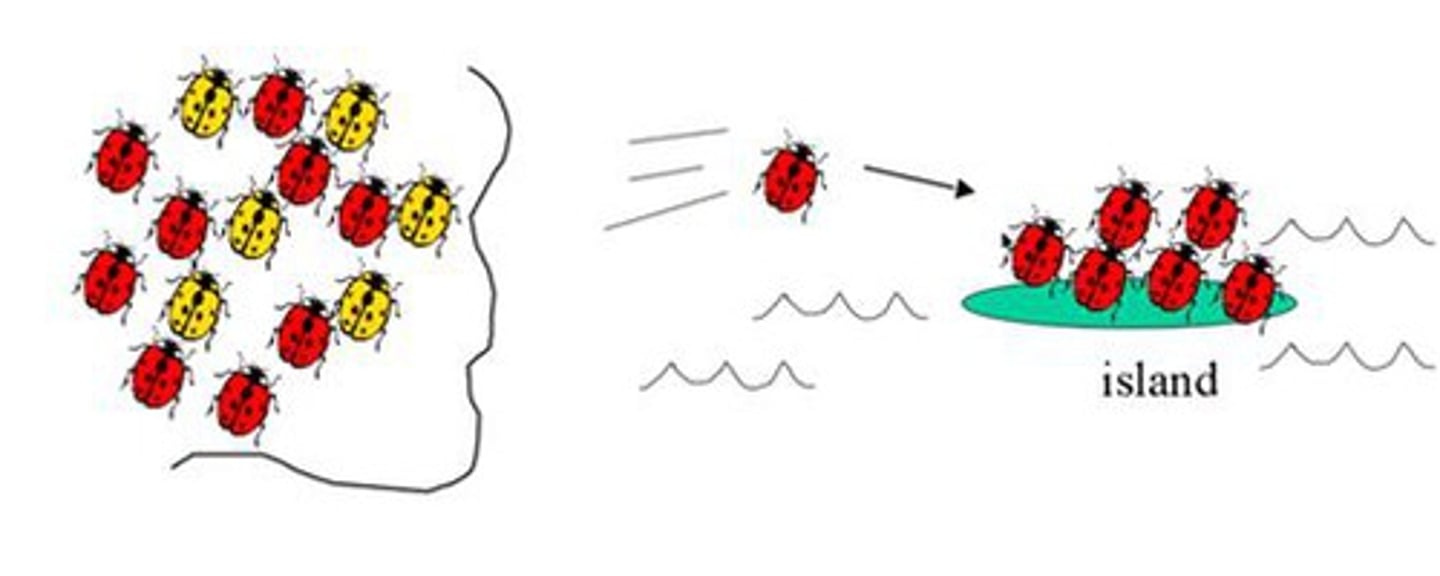
Inbreeding
Breeding between closely related individuals. It is commonly used in selective breeding (or artificial selection) and increases the chance of favourable alleles coming together, resulting in favourable phenotypes.
Seen in founder effect = effects on gene pool and genetic diversity of population.
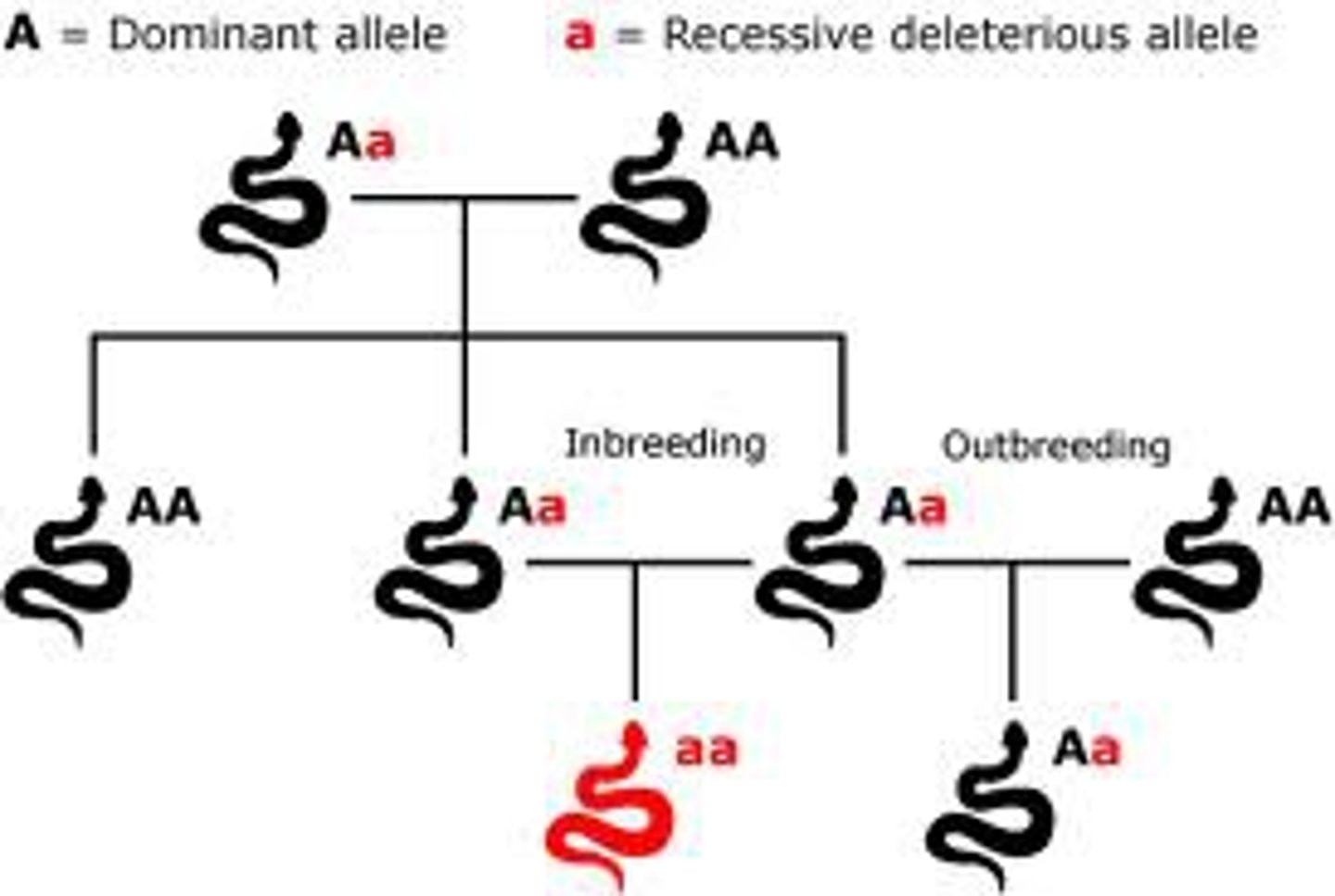
Outbreeding
Breeding between non-related individuals. It tends to increase the number of heterozygotes in a population and reduce the chances of harmful or unfavourable recessive alleles coming together.
display hybrids because they contain a variety of alleles.
Natural selection
Beneficial phenotypes in a population are preserved because they are selected for while unfavourable phenotypes tend to be lost because they are selected against.
Types of natural selection
- Stabilising natural selection
- Directional natural selection
- Disruptive natural selection
Stabilising natural selection
Favours the average phenotype and selects against both extremes
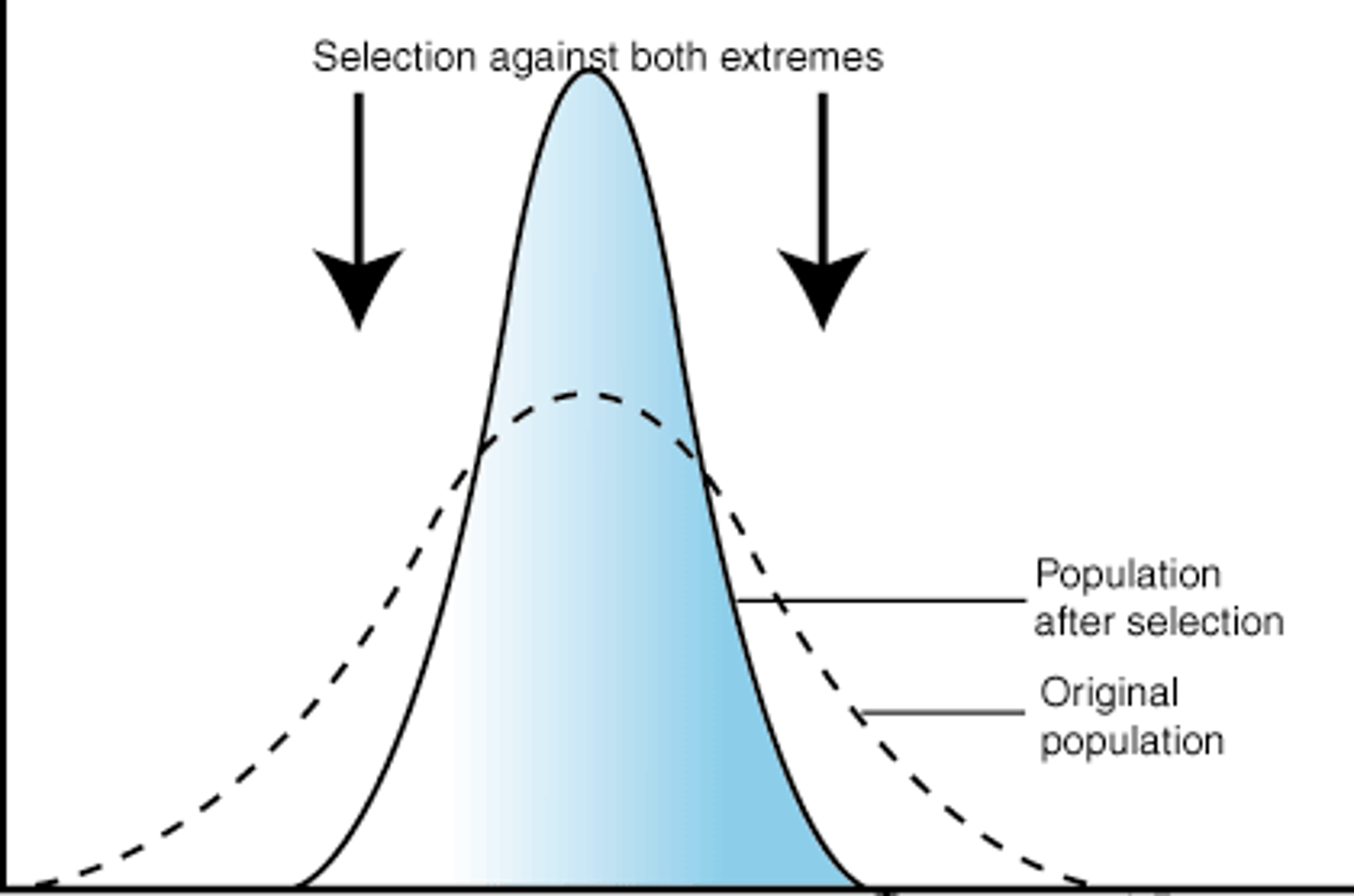
Directional natural selection
Favours one extreme phenotype over the others
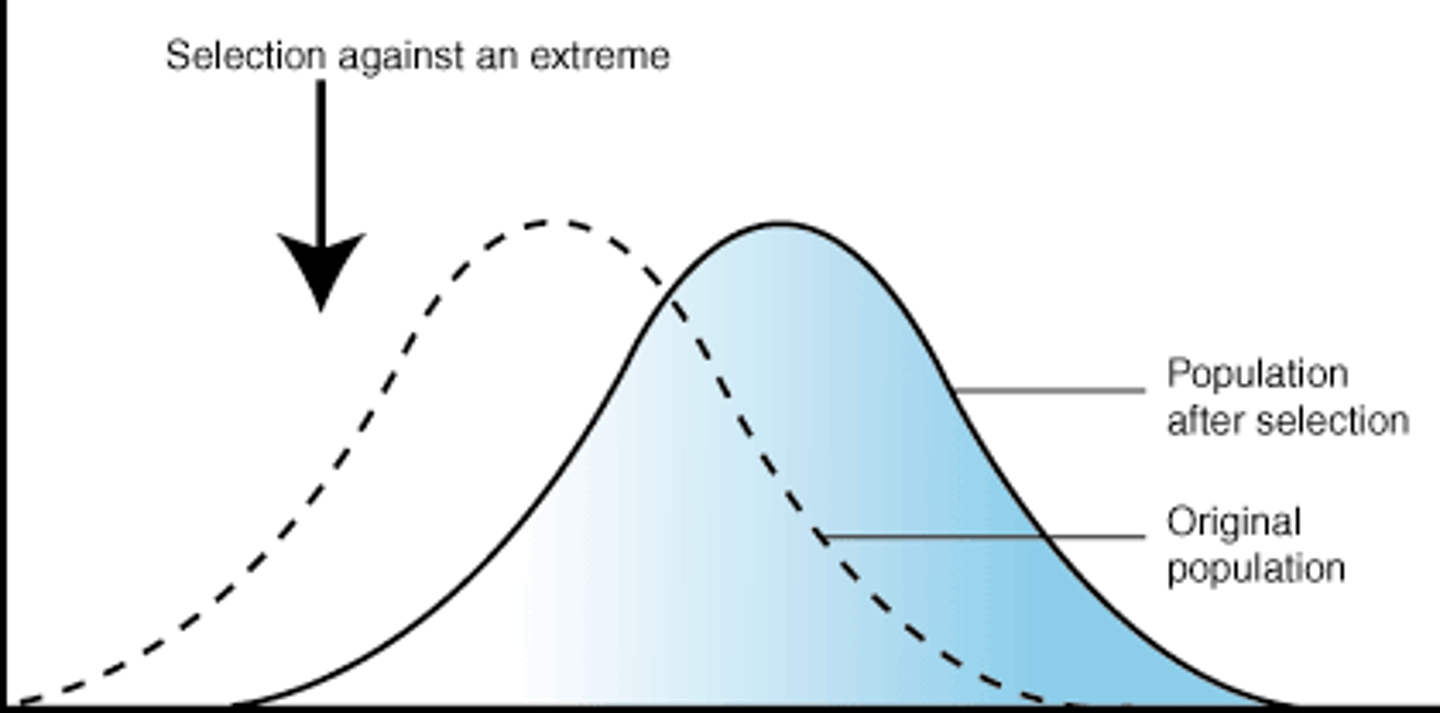
Disruptive natural selection
Favours both extreme phenotypes at the expense of the average.
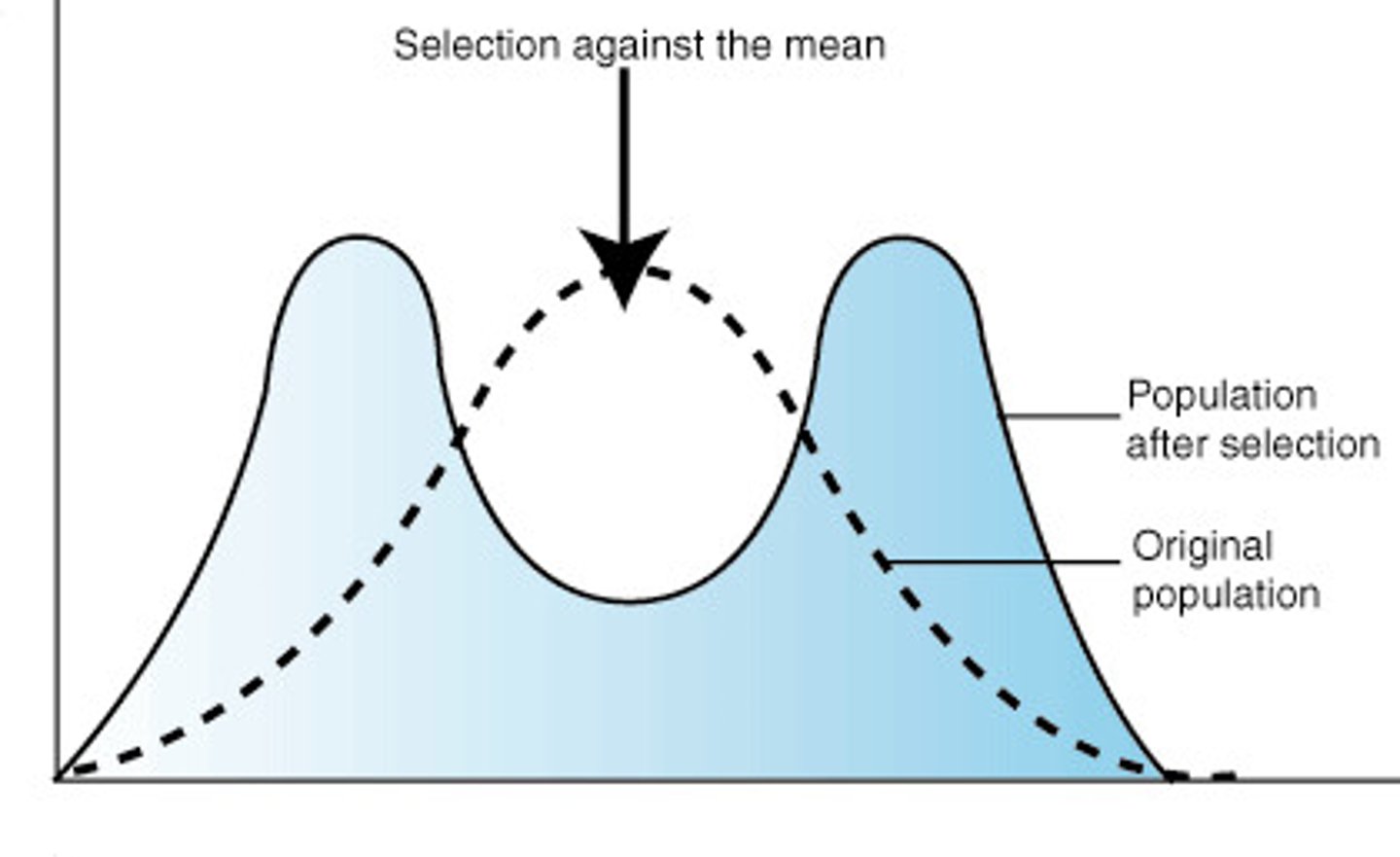
Mutation
Mutations are a permanent change in the DNA in a gene or chromosome. They are the ultimate source of variation because they can create new alleles.
Harmful mutations
alters the DNA sequence, they upset the structure and function of the protein they code for = a disorder in the organism that significantly lowers its survival and reproductive capabilities.
Neutral (or silent) mutations
(neither harmful nor beneficial to the organism) Mutation may have no adaptive value when it occurs, but this may change in the future.
Beneficial Mutations
It affects the organism in some way as to increase its chances of reproductive success, and therefore the chance of the mutation in question being passed along.
Gene mutations
Gene mutations = from mistakes in the base pairing process during DNA replication or from the effect of mutagens.
Polyploidy
In polyploidy, every chromosome is represented 3 or more times so that instead of being diploid (2n), the individual is triploid (3n), tetraploid (4n), hexaploid (6n) etc
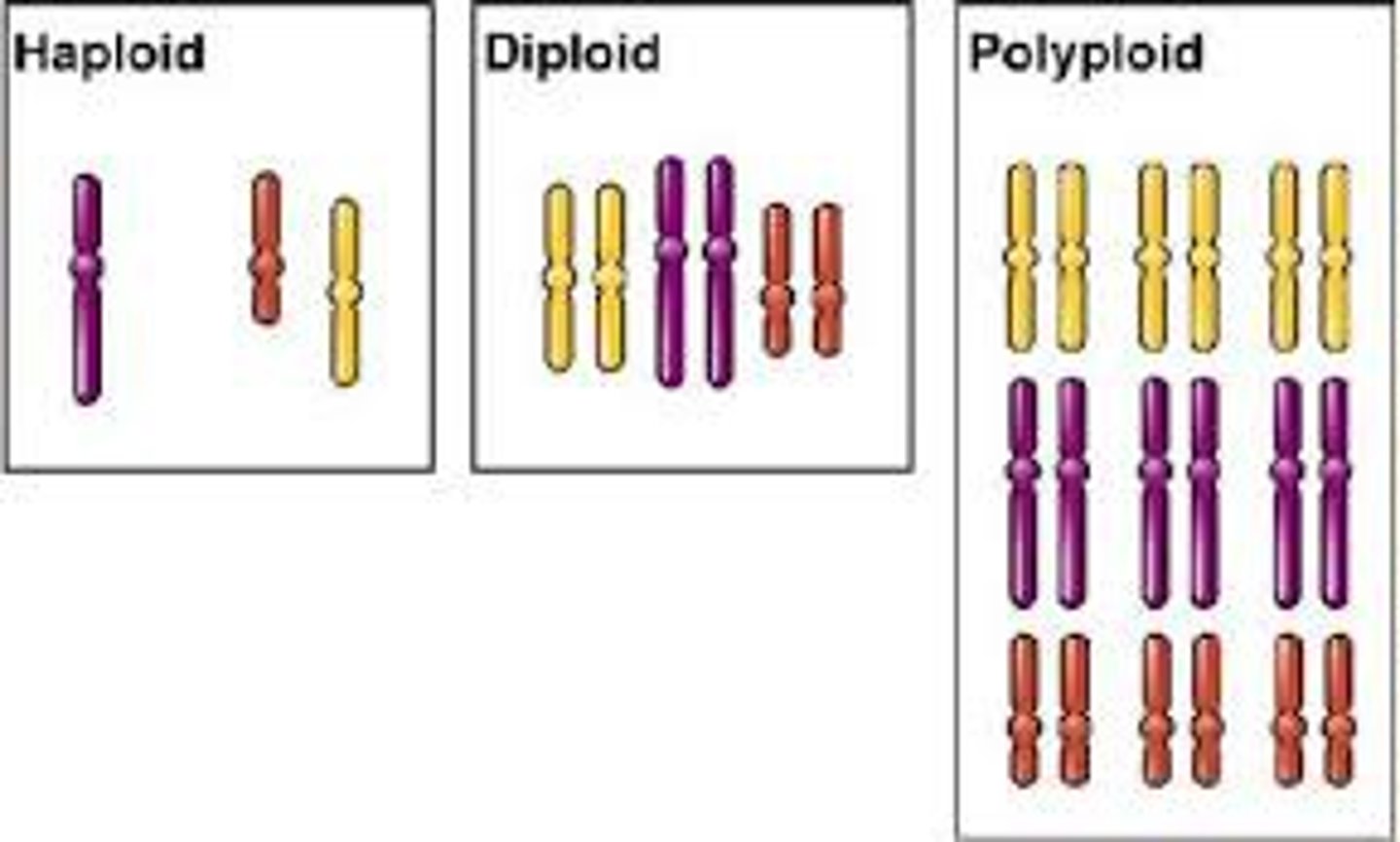
Autopolyploidy
Involves the multiplication of the entire genome within a single species. Therefore an autotriploid has 3 sets of chromosomes and an autotetraploid has 4 sets. Autopolyploidy results from the failure of chromosomes to separate during cell division because the spindle does not function properly. As a result, all the chromosomes finish up in the same nucleus, which has twice as many chromosomes as it should. This can occur in meiosis or mitosis.
Autoploidy resulting from meiosis
This can happen in the first or second division of meiosis, and results in diploid gametes. If a diploid gamete fuses with a normal haploid gamete, a triploid zygote is formed. If it fuses with another diploid gamete, a tetraploid zygote is produced.
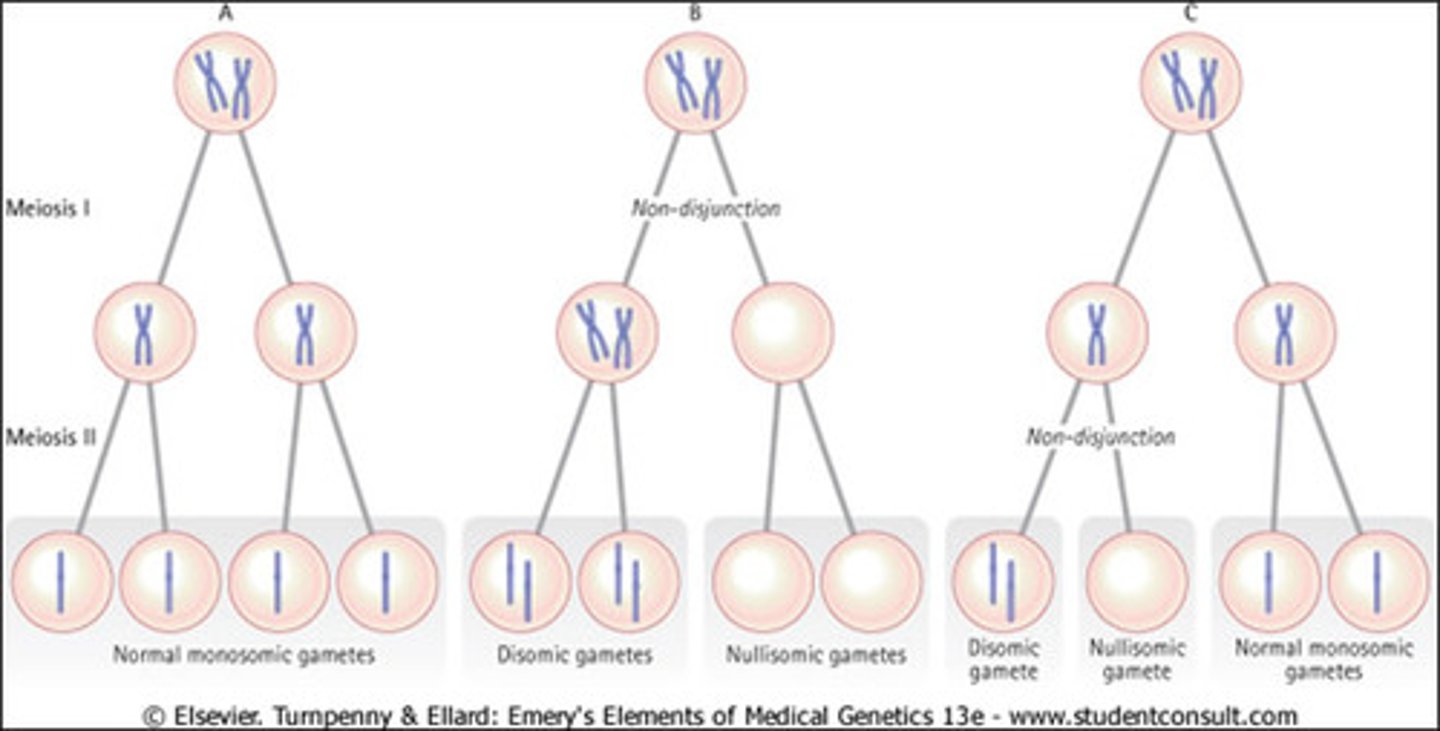
Autoploidy resulting from mitosis
This results in a tetraploid cell. Each replicated chromosome separates, but the cell itself does not divide. The descendants of this cell will also be tetraploid. This is called somatic doubling, and if it occurs in a shoot tip it may give rise to a tetraploid shoot.

Reduced fertility in autopolyploids
Although autopolyploids are often vigorous and may be larger, they are usually infertile, especially autotriploids (produced by fertilisation between a diploid and a haploid gamete). Triploids are highly infertile, because of the very low probability that meiosis will produce cells with balanced chromosome sets. Such plants can only reproduce asexually, therefore the only source of genetic variation in them is from mutation. Autotetraploids are usually more fertile than autotriploids, as it is more likely that the 4 homologues will be able to form viable pairs during meiosis (each daughter nucleus can receive 2 chromosomes).
Allopolyploidy
Results from hybridisation between species. Chromosome doubling must occur for viable offspring to be produced.
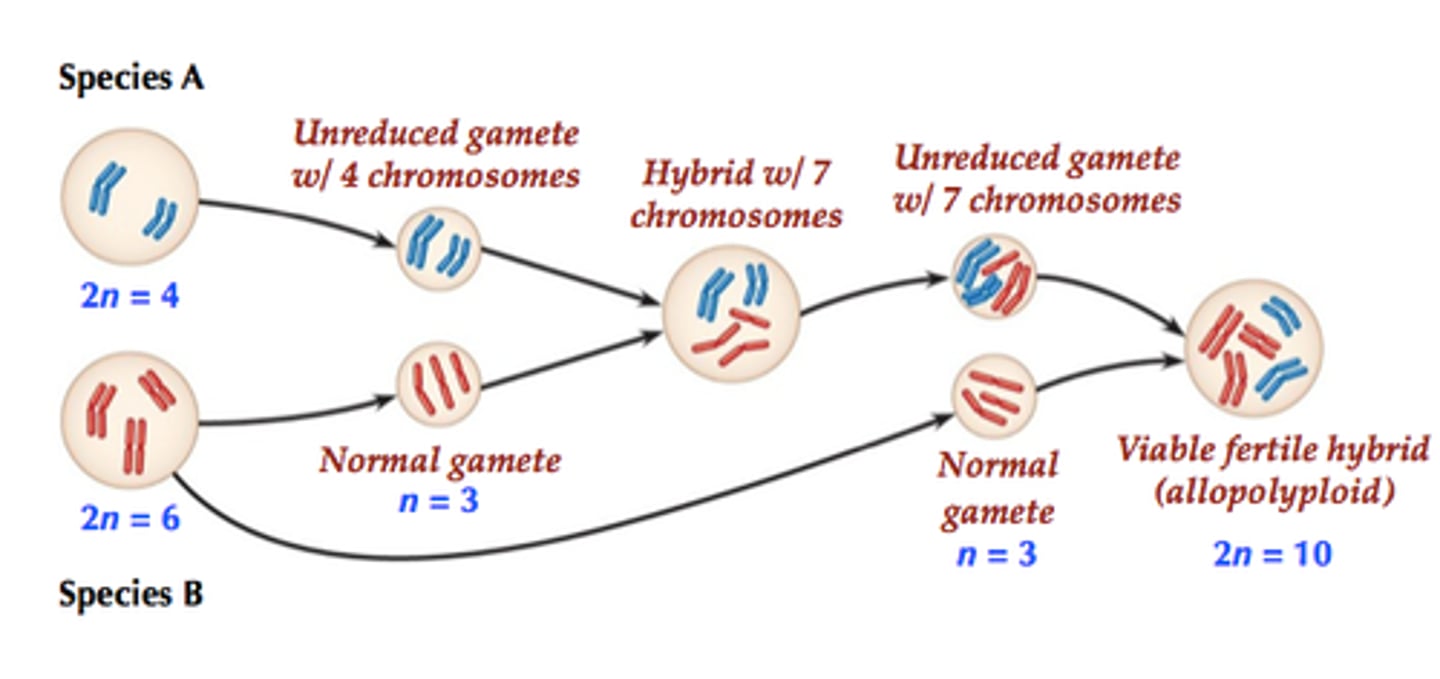
Ecological significance of polyploidy in plants
The effects of polyploidy depends on the environment. The frequency of polyploid species increases markedly from the equator towards the poles, and also with altitude. The lower the temperature, the greater the advantage of polyploidy. This could be because as a result of the advances and retreats of ice caps during successive glaciations, a more variable environment existed at higher altitudes and latitudes than in warmer regions. Under these conditions, the greater genetic variability of polyploids could have been advantageous. In warmer climates, the advantage of having more genes may be offset by the disadvantage of the increased energy needed for their replication and transcription. Also, polyploidy is important in terms of evolution because it can lead to instant speciation through reproductive isolation.
Speciation
Speciation is the formation of new species. It results from populations becoming reproductively isolated so gene flow can no longer occur. Speciation may occur:
- gradually by the slow accumulation of small changes
- instantly by changes in chromosome number through polyploidy
Sympatric species
Closely related species that live in the same geographic location
Allopatric species
Closely related species that live in different geographic locations
Reproductive isolating mechanism
Any factor that stops members of populations of the same species or members of different species from breeding together; it acts as a barrier to gene flow. RIMs may be:
- prezygotic: act before the egg is fertilised
- postzygotic: act after the egg is fertilised
Prezygotic isolating mechanisms
These include:
- Geographical isolation
- Structural (morphological) isolation
- Ecological isolation
- Temporal isolation
- Behavioural isolation
- Gametic isolation
Geographical isolation
Geographical isolation results from physical barriers (e.g. rivers, mountain ranges, oceans) separating populations. If the populations come together again at a later stage, they are sufficiently different (as a result of different selection pressures in different environments, and/or possibly genetic drift) that they do not/are unable to breed.
Structural (morphological) isolation
Structural (morphological) isolation results from differences between the structure of external reproductive organs (genitalia) that do not allow for transfer of sperm between the sexes. This is common in insects that have species-specific shaped genitalia which prevents hybridisation between species.
Ecological isolation
Ecological isolation results from differences in habitat within the same geographical area, so that the populations rarely come into contact with each other.
Temporal isolation
Temporal isolation results from breeding behaviour resulting at different, non-overlapping times. There can be daily or seasonal differences in timing of mating, or differences in the season in which flowering or pollination occurs.
Behavioural isolation
Behavioural isolation results from differences in behaviour, typically mating behaviour such as courtship. Females only recognise and respond to the courtship behaviour of males of their own species. Behavioural isolation may also result from different activity patterns, such as:
- although 2 species are sympatric, one is diurnal and the other in nocturnal in feeding habits
- many flowers secrete nectar at a particular time of day, resulting from insects tending to specialise by feeding from any one species at a given time
Gametic isolation
Gametic isolation results from incompatibility of gametes. Sperm may not be able to fertilise an egg of another species because:
- the egg's surface does not have the correct chemical receptors
- sperm cannot penetrate the surface of the egg
- sperm cannot survive in the chemical environment of the female reproductive system
Postzygotic isolating mechanisms
Despite prezygotic isolating mechanisms, sperm may fertilise eggs of different species to form a hybrid. Hybrids are usually prevented from producing viable offspring by postzygotic isolating mechanisms:
- hybrid inviability
- hybrid sterility
- hybrid breakdown
Hybrid inviability
The zygote, embryo or offspring is inviable (i.e. unable to survive or develop normally), so dies early in its development.
Hybrid sterility
The hybrid reaches maturity but is infertile so cannot breed.
Hybrid breakdown
Occurs when the hybrid reaches maturity and is able to breed but the next or subsequent generations are infertile or have reduced reproductive capability.
Allopatric speciation
A population becomes divided into 2 or more populations by a geographical barrier, causing the populations to become geographically isolated. Selection pressures on the two populations differ, and since there is no gene flow between them, the gene pools begin to diverge. If the barrier to gene flow disappears, the populations can merge, forming 2 sympatric populations. If any hybridisation occurs, selection against interbreeding results in evolutionary divergence of reproductive biology, i.e. the evolution of prezygotic isolating mechanisms which prevent hybridisation.
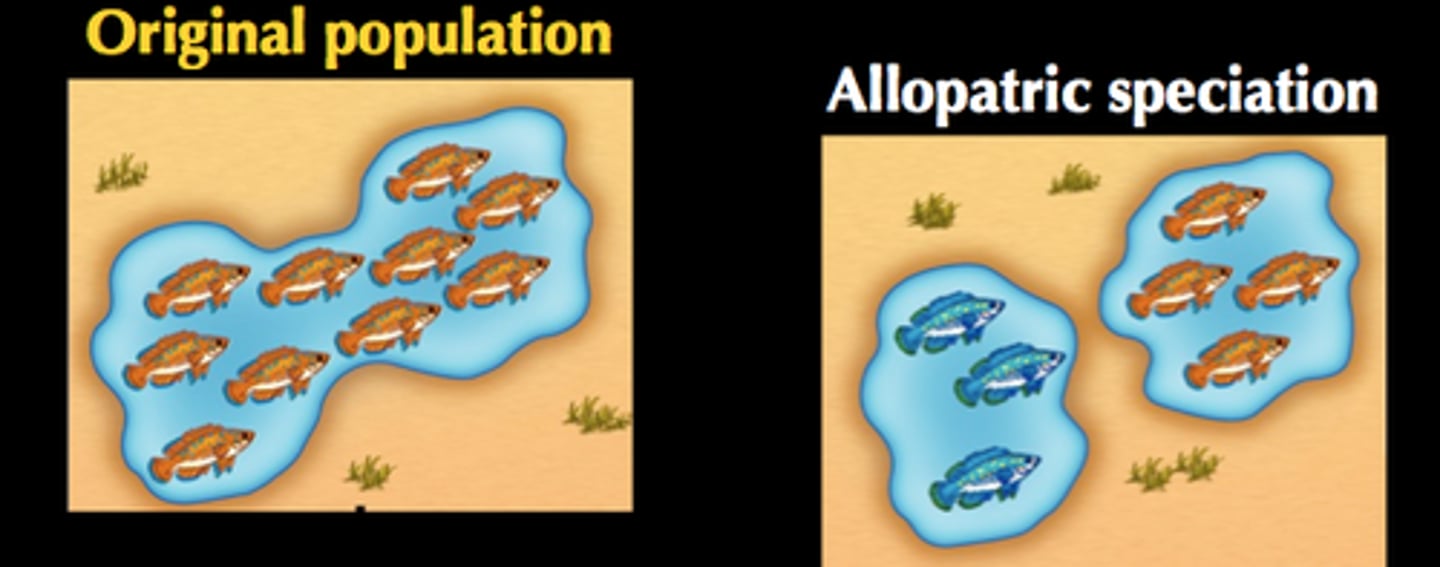
Sympatric speciation
One species gives rise to 2 or more species without prior geographical separation. The most common form is instant speciation, involving the formation of a polyploid which results in a new species being formed in a single generation due to the consequent formation of the postzygotic reproductive barrier of hybrid sterility. This is much more common in plants due to the formation of allopolyploids.
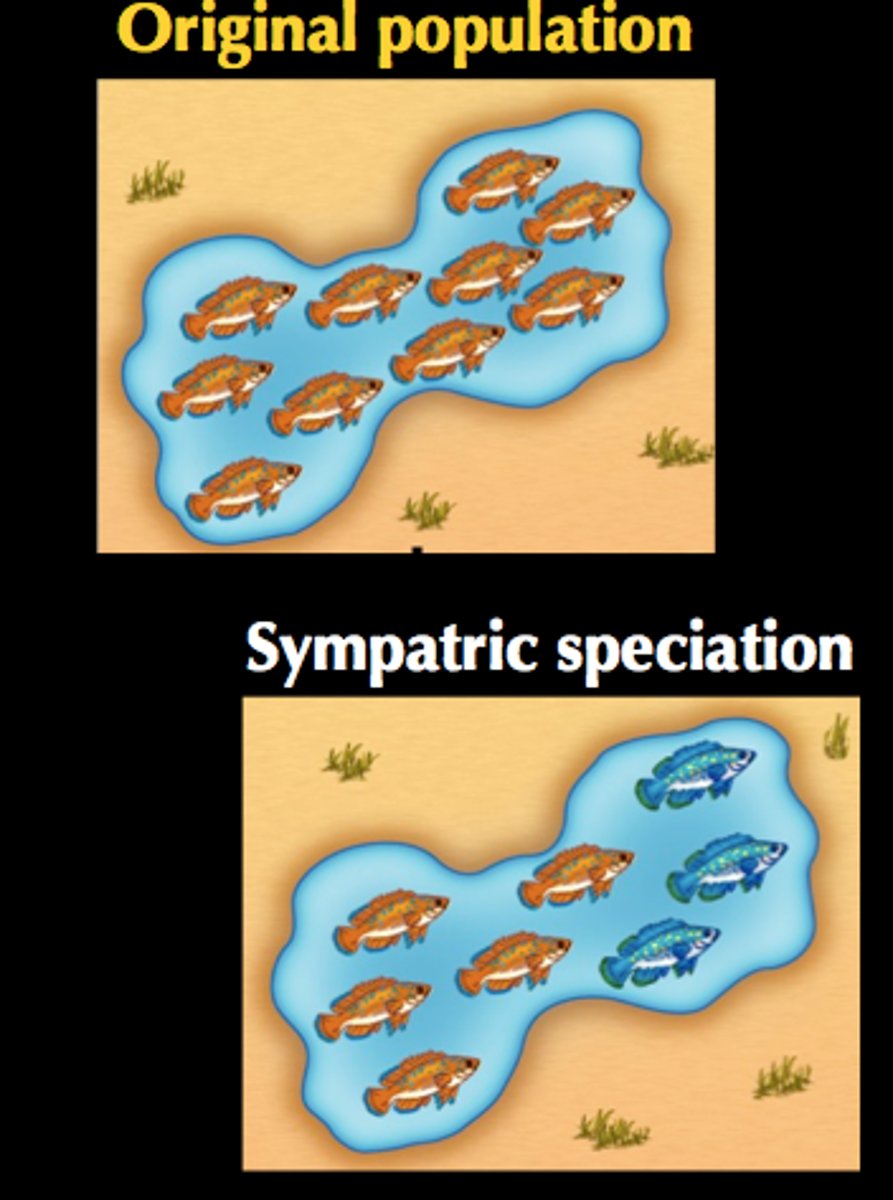
Rates of evolution
- Gradualism
- Punctuated equilibrium
Gradualism
Initially after the acceptance of the theory evolution by natural selection, it was thought that the only way new species could evolve was over a very long time (millions of years) with a gradual transition from one form to another. This gradualism sees transitional forms in the fossil record in response to natural selection.
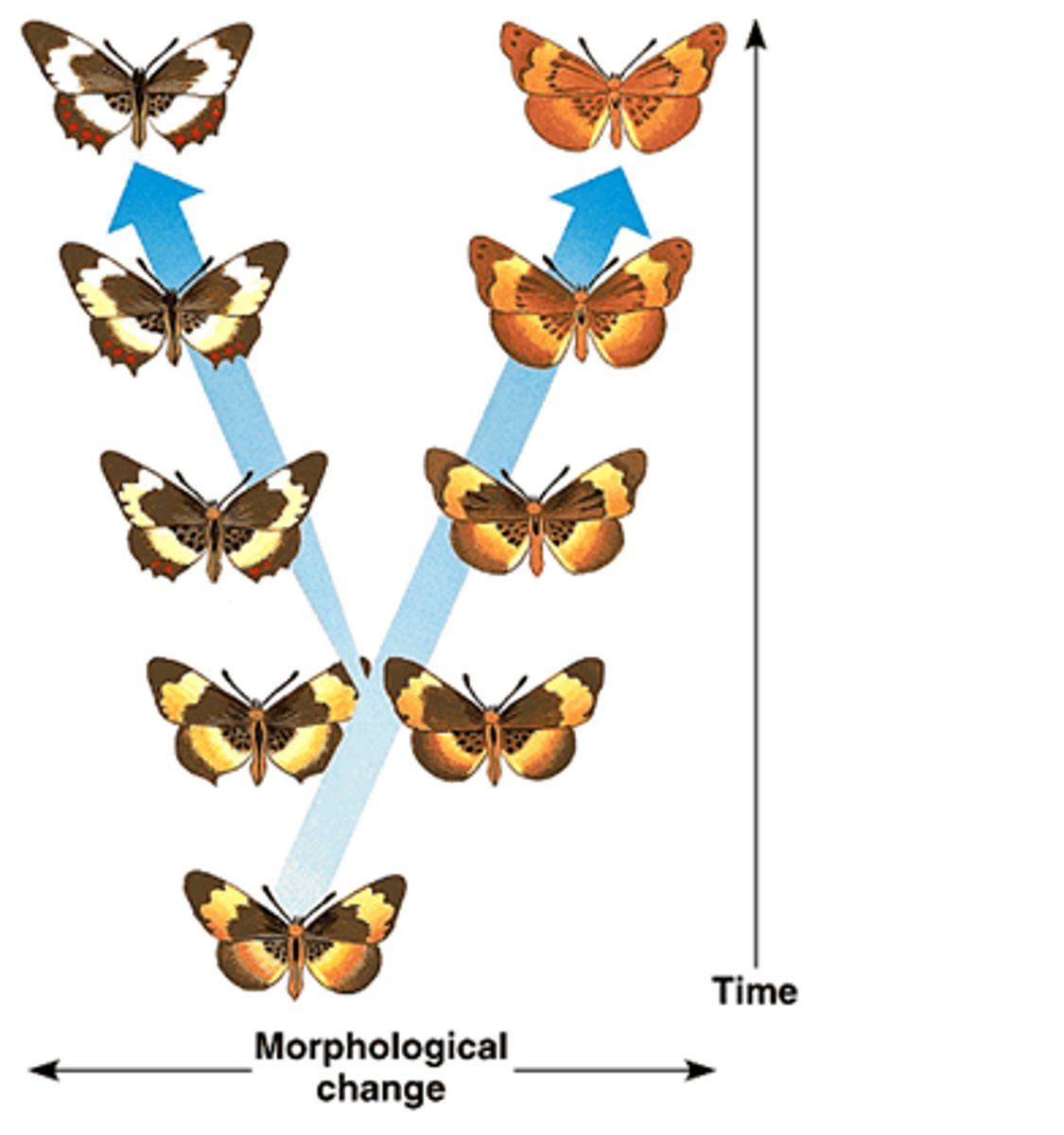
Punctuated equilibrium
As knowledge of the fossil record progressed, it became apparent that for many groups the rate of evolution had not been steady. Long periods of time elapsed during which there was little, if any, change - known as stasis (perhaps brought about by stabilising selection) followed by sudden bursts of rapid speciation (perhaps over thousands rather than millions of years). This punctuated equilibrium often involves the formation of many different species that are no longer closely related. There are few transitional fossils, because of the rapid pace of change.
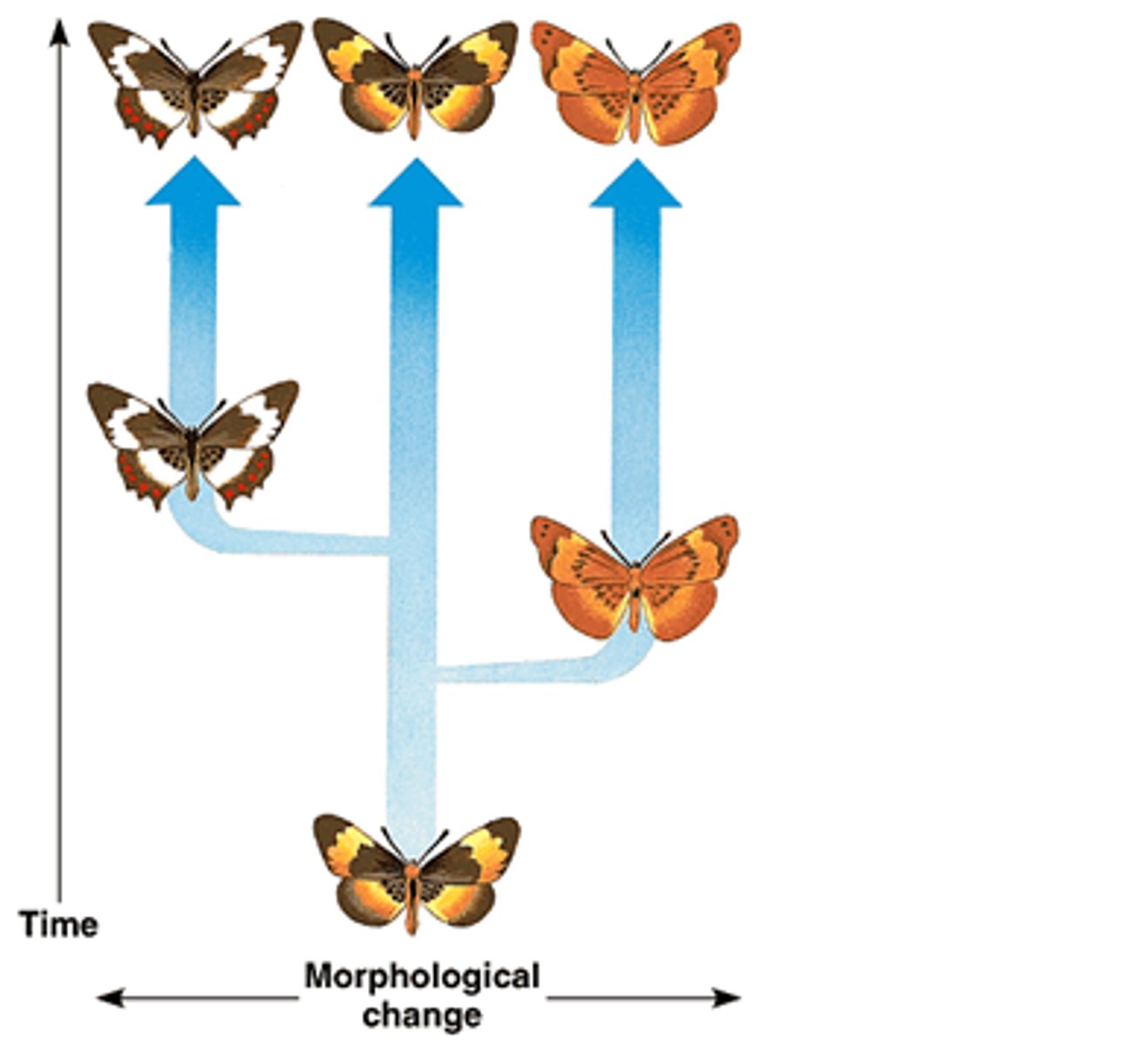
Types of evolution
- Divergent evolution
- Convergent evolution
- Parallel evolution
- Co-evolution
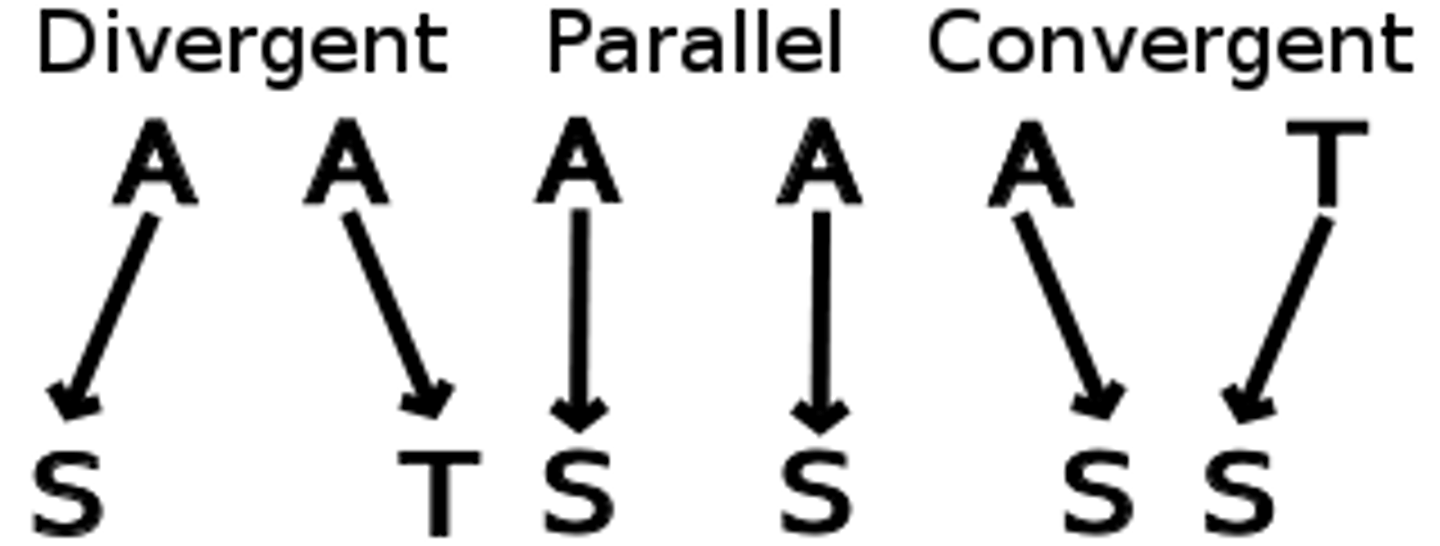
Divergent evolution
Divergence occurs when two or more species result from a common ancestor - typically, this is by allopatric speciation when two populations become geographically isolated. Different selection pressures in the different environments result in the two populations diverging as different phenotypes get selected for to meet the demands of the different environments. The populations may diverge sufficiently (accumulation of different alleles in the gene pool) that reproductive isolation, hence speciation, results. Divergent evolution has occurred.
Adaptive radiation
Adaptive radiation is a type of divergent evolution. It involves the rapid evolution of a large number of species from an ancestral group to occupy a variety of different ecological niches that may have become available suddenly. When members of an ancestral species move into new environments, this may involve out-competing and displacing other species, or habitats may become available through a catastrophic event (e.g. mass dinosaur extinctions left vacant niches for mammals to occupy). Populations are subject to new selection pressures, and new adaptations evolve. Geographical isolation may occur. Accumulation of new alleles in the isolated gene pools result in reproductive isolation and therefore the formation of new species. Adaptive radiation may result from the sudden relaxation of competition, which can arise in two different ways:
- evolution of some new structure, physiology or behaviour enabling exploitation of a different aspect of a habitat
- geographical isolation from competitors or predators
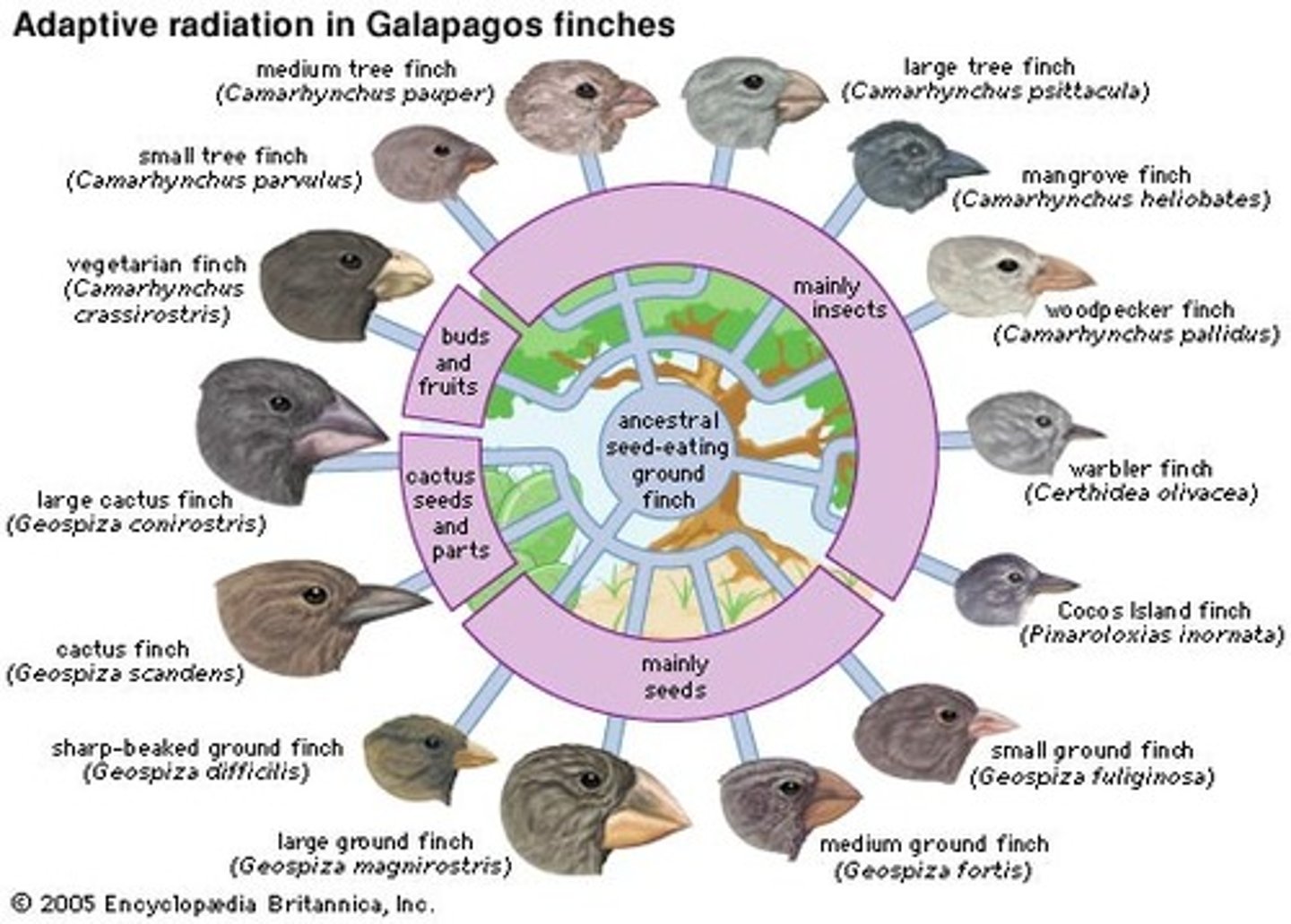
Homologous structures
An important source of evidence for divergence and adaptive radiation involves homologous structures - features similar in structure and origin but different in function. The similarity in structure indicates common ancestry, while difference in function indicates adaptation to different selection pressures in different environments. Homology can be clearly seen in the limbs of different vertebrate groups.
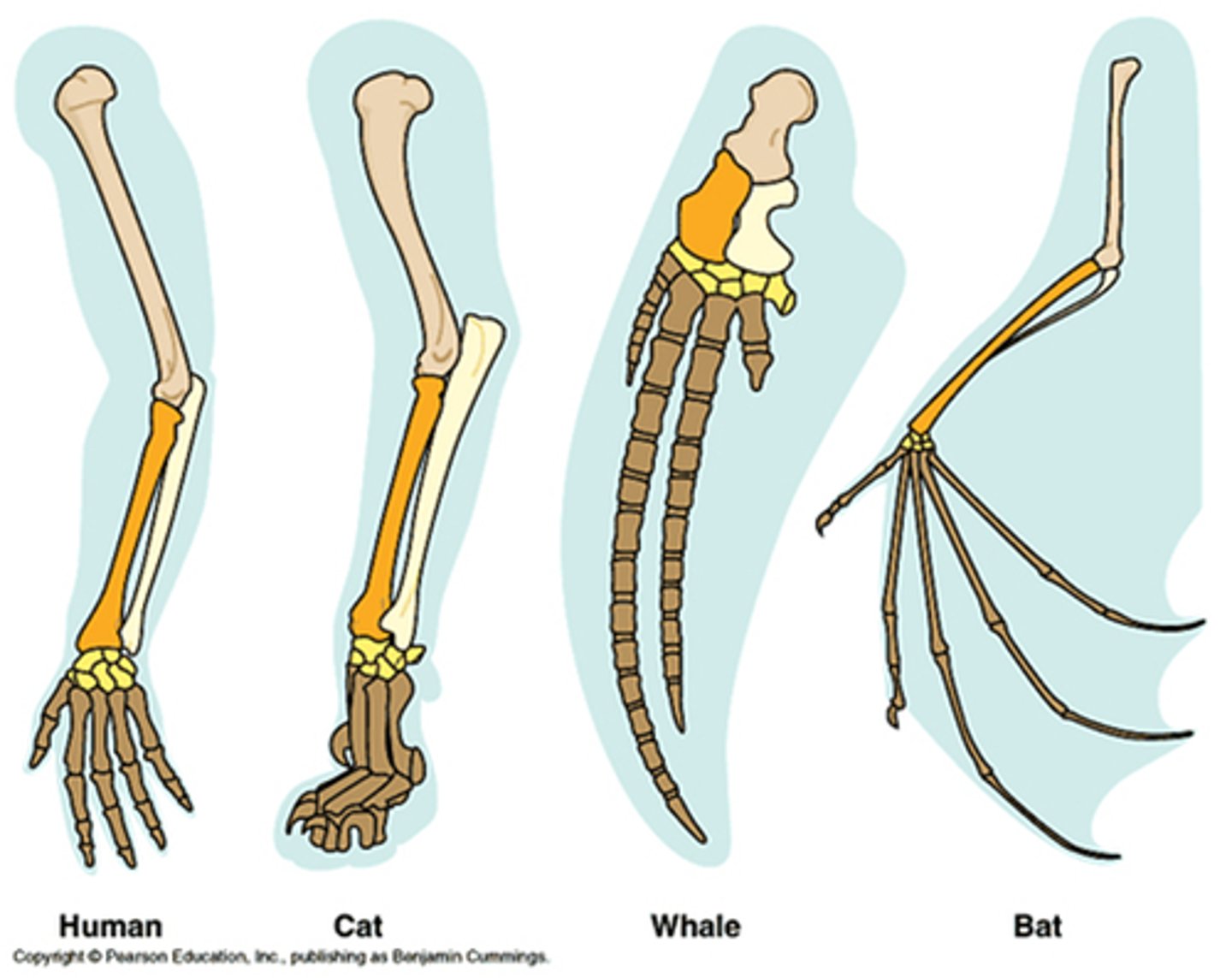
Convergent evolution
Convergent evolution occurs when two or more unrelated species evolve to resemble each other (convergence) as a result of being subject to similar selection pressures. Convergent evolution results in analogous structures - structures with different evolutionary origins that appear very similar because they carry out the same or similar functions. Resemblances due to convergence are always superficial. Convergence is thus purely phenotypic, being confined only to certain bodily features linked to adaptation to a particular niche. At the genetic level, all evolutionary pathways diverge.
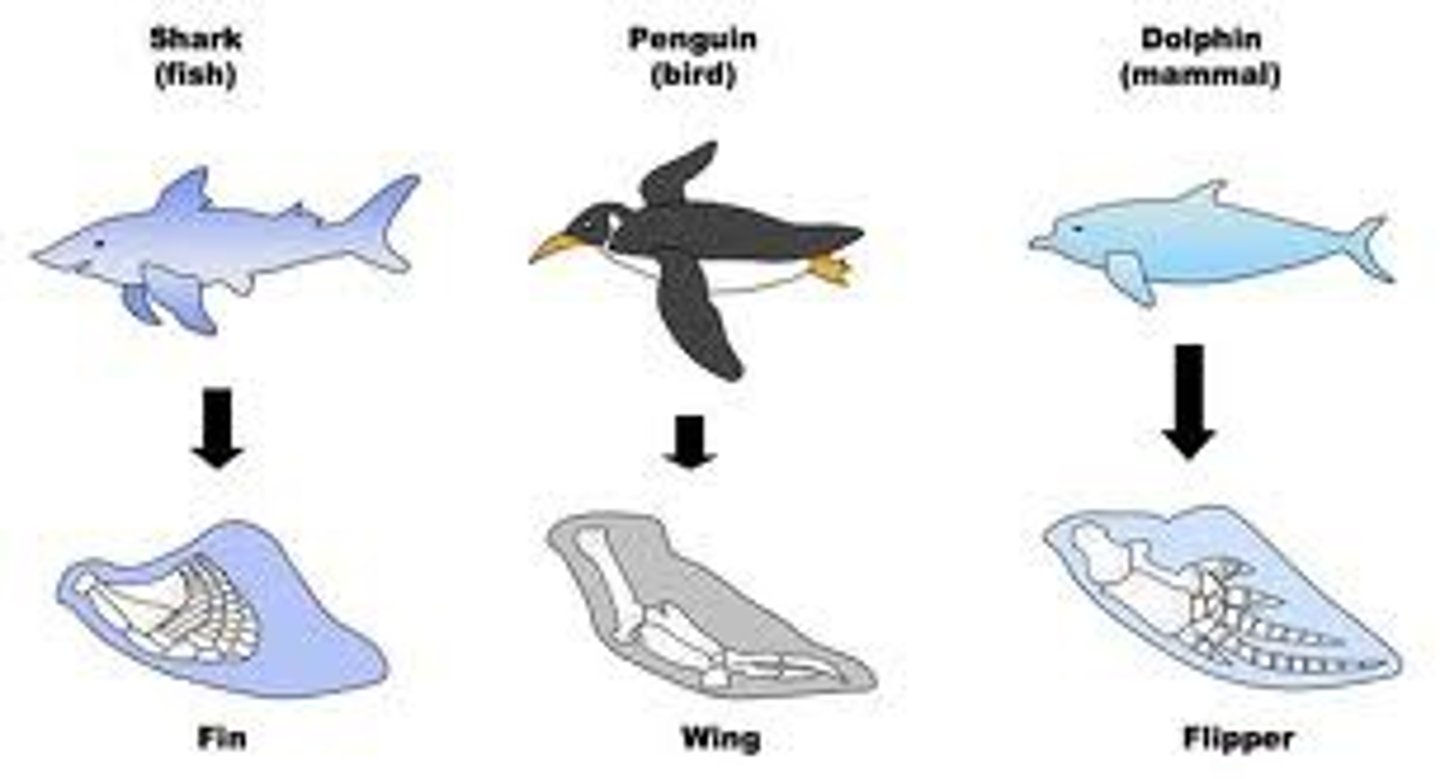
Parallel evolution
Whereas convergence involves unrelated or distantly related starting points, parallel evolution occurs when 2 or more related groups evolve along similar lines independently.
Co-evolution
Co-evolution is a reciprocal evolutionary change in which a change in a feature of a species acts as a selection pressure for a change in the feature of another (unrelated species); both species have a strong ecological relationship with each other. Co-evolution can often be seen in the relationship between predator and prey, parasite and host, mimic and model, pollinators and flowering plants, mutualistic species and between interspecific competitors.